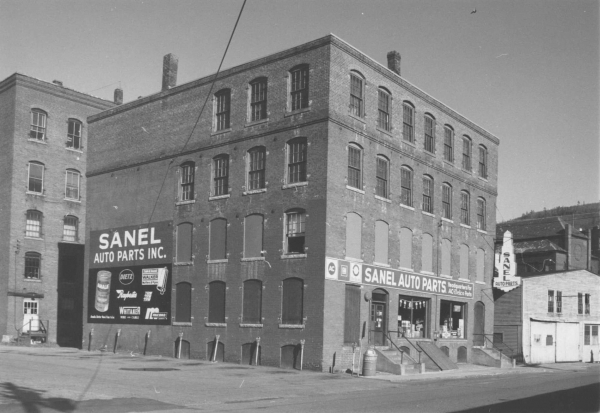BRATTLEBORO — The Emerson-DeWitt building development project at 47 Flat St. has been given a boost, making the list of 28 rehabilitation and revitalization projects in 22 of the state's designated downtown/village centers to be supported with tax incentive dollars.
In this case, the project is getting $577,100 in tax credits toward the total cost of almost $10.2 million.
The building, a former warehouse and, most recently, an auto parts supply store, has been vacant and partially boarded up for nearly a decade.
Using state and federal tax credits, the building will be rehabilitated for 19 housing units and a shared office space supported by Brattleboro Development Credit Corporation's Small Business Development office on the first floor.
Work will include window restoration, installation of a new elevator and egress stair, asbestos and brownfield remediation, and new roofing, utility, and sprinkler systems.
“Receiving this tax credit is a huge piece of the puzzle on this project,” said Skye Morse, M&S real estate development partner with Bob Stevens, founder and co-owner of Stevens & Associates, an architectural and engineering design firm.
That's because “not only does it indicate that it's a priority project for the state and community, but it's also being recognized as a significant benefit to the community - and that's part of being a designated downtown,” Morse said.
Morse has been working on the Flat Street project for about two years and said he hopes to start construction by the end of this fall. He expects a 10-month construction period and hopes “to invite new residents into the property around this time next year.”
“We're almost there,” Morse said, noting that about $9.5 million has been raised for the project among 15 funding sources.
“People are fascinated by what it takes to put a project like this together - all sorts of grants and funding mechanisms, all with their own sets of strings attached,” he said. “It's a lot, but we're so close to the finish line that we can start to breathe a little easier.”
A big economic boost with 'long-lasting impacts'
State officials say that the awards overall for the 28 projects in 22 downtowns throughout Vermont will help generate more than $83 million in building improvements and public infrastructure to support local businesses, create new housing opportunities, and incentivize investments to help improve the resiliency and vitality of Vermont's community centers.
Tax credits work like this: the state grants tax credits to a project and the project can then sell those credits to certain taxpayers, predominantly banks and insurance companies. Those institutions can then, in turn, apply the credits against their taxes.
“Like so many aspects of our lives, neighborhoods, and economy, Vermont's downtowns and villages have been significantly impacted by the pandemic,” said Gov. Phil Scott in announcing the awards. “That is why it is inspiring to see so many Vermont companies, nonprofits, and individuals committed to making significant investments for the future of their communities.
The governor credited “this collaborative approach” in part with the success of the state's Downtown Program, which operates through the state's Agency of Commerce and Community Development.
“The kinds of projects we're funding today, along with the strategic use of federal relief dollars, give us the opportunity to make transformative change that will have long-lasting impacts around the state,” Scott continued.
The Guilford Free Library, also on the list, is expected to receive $30,106 in tax credits toward its $983,026 renovation and expansion project.
After years of discussion and planning, the library has embarked on a project to build a small, “historically sensitive” addition to its small, but heavily trafficked, space.
The addition will allow the building to provide ADA-compliant access for all patrons and state tax credits will help pay to install a new elevator.
Based on the success of the program, Scott has proposed increasing available credits each year since coming to office.
And with support from the Vermont Legislature, the cap on these credits has been raised from $2.4 million to $3 million over the last five years.
“The Downtown and Village Center tax credit program has remained popular, despite recent economic uncertainty,” said Department of Housing and Community Development Commissioner Josh Hanford.
“The continued fierce competition for funding we see every year is a testament both to the effectiveness of the program, but also to the dedication of so many Vermonters who continue to invest in making the place they call home even better for their residents, businesses, and visitors,” he said.
